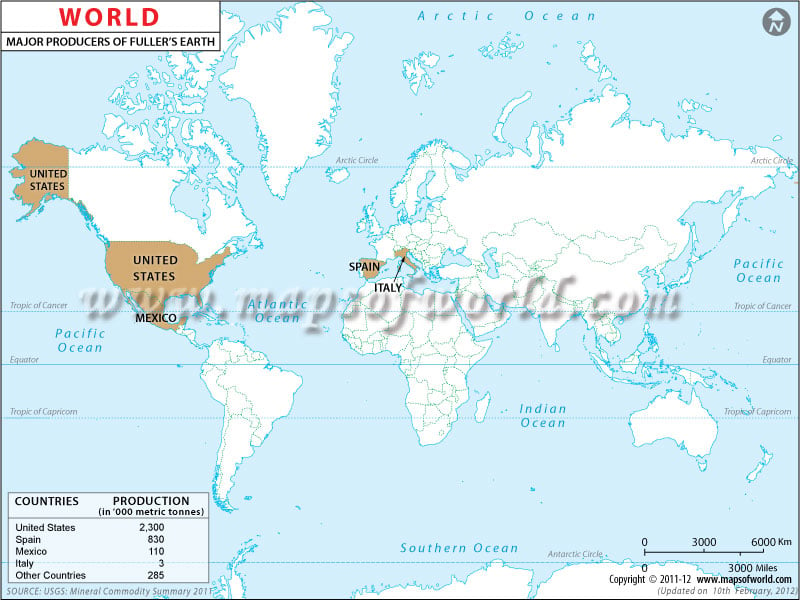Major Producers of Fuller’s earth in world-2010
| Country | Production in Thousand Metric Tonnes |
| United States | 2300 |
| Spain | 830 |
| Mexico | 110 |
| Italy | 3 |
| Other Countries | 285 |
Fuller’s earth is a fine-grained, naturally occurring earthy substance found in a wide range of natural colours, from brown or green to yellow and white. With a high magnesium oxide content, fuller’s earth has a substantial ability to adsorb impurities from fats, grease, or oils.
It is used as an ingredient in powdered, “dry” shampoos. The material is used as a decolorizer, filter, and to purify vegetable oils and greases. Fuller’s earth bears close resemblance to clay. The two substances can be distinguished by comparing the water content in the two. Fuller’s earth has higher water content and crumbles into mud when mixed with water.
The World Map of Fuller’s Earth Producers shows a list of the major countries that produce large quantities of the substance. As the data in the map shows, United States leads the world in the production of fuller earth with an annual production of 2.3 million metric tonnes of the substance.
The second place is occupied by Spain followed by Mexico and Italy. Senegal, Pakistan, Morocco, South Africa, and Guatemala are the other countries that have large reserves of fuller earth.
Fuller earth finds application in cosmetics, and face packs. It is also used in the production of pharmaceuticals and in the manufacture of various catalysts used in the petroleum and chemical industries.
The presence of fuller earth in a complex laundry detergent helps to prevent redeposition of soil.
During the Second World War and even before that, it was used to treat sore and inflamed feet.

